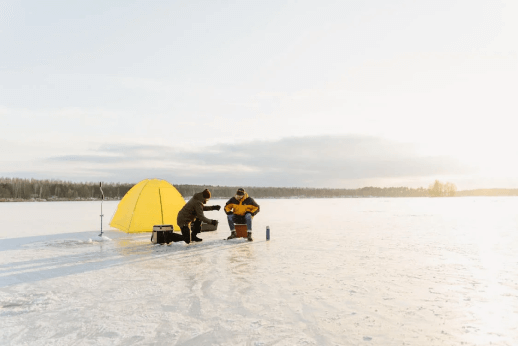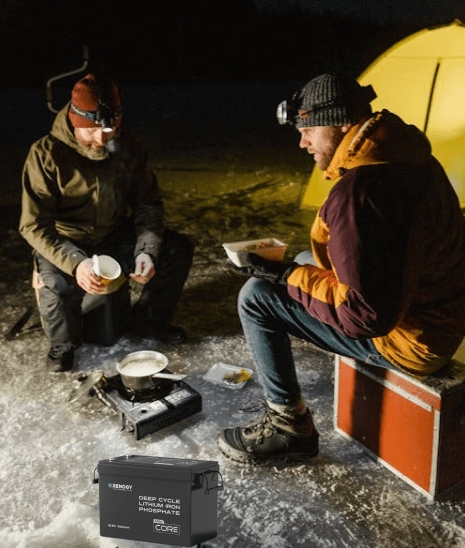How to Prepare for a Freeze
The freezing weather is fast approaching, have you cozied up your home? The unforgiving freezing weather can cause damage to your home and cause adverse health issues, such as hypothermia. Don't wait until the last minute to winterize your property. The best time to start preparing for the freeze is now.
Do you want to learn how to prepare for a freeze? This guide will help you prepare adequately for the freeze to avoid frigid emergencies in the middle of the winter. Let's dive in!
What Is a Freeze?

A freeze is the other word for the duration of icy weather. A freeze occurs when the surface air temperature reaches 32°F or drops lower in an extensive area. The freeze is categorized into three; a light freeze, a hard freeze, and a severe freeze.
- Light Freeze: the light freeze occurs when the temperatures range from 32 to 29 degrees.
- Hard Freeze: the temperatures during a hard freeze range between 28 to 25 degrees.
- Severe Freeze: this is also known as the killing freeze, and temperatures drop below 24 degrees Fahrenheit.
Freeze Facts in U.S. 2024
As mentioned above, a freeze happens when temperatures drop under 32°F. The USA experienced a freeze in early 2024, mostly in January. The freeze was characterized by record-breaking low temperatures and severe wind chills, and it swept from Texas to the Midwest.
In Texas, the freezing temperatures were notable in the Rio Grande Valley which recorded historical lows. The freeze affected the agricultural sector and some essential infrastructure.
In October 2024, the weather forecasts and the government have already started issuing freeze information and guidelines to help people and various sectors get ready for the freeze in the coming months. The possible causes of a freeze are:
- Calm light winds: these types of winds inhibit the atmosphere stirring and allow the formation of a sheet of cool temperatures on the surface. The super-cold temperatures can be 10 degrees cooler.
- Clear Skies: a clear sky caused radiational cooling which causes the heat to escape from the atmosphere.
- Cool Temperature: moisturized and cold temperatures lead to the formation of ice crystals. When the freezing temperatures continue to cool, it leads to the formation of frost on the earth's surface.
- Topography: cold air settles on the valleys because the cool air is denser than warm air. The topography heavily determines the formation of frost. Additionally, valleys shield an area from the strong winds, which further enhances the formation of frost.
Why We Need to Prepare for A Freeze?
You must be well prepared as the temperatures start dropping. As the freezing weather starts to set in, your body becomes weaker in fighting off infections and viruses.
Also, winter storms increase the risks of hypothermia, carbon monoxide poisoning, car accidents, and overexertion which causes heart attacks. Additionally, freeze preparation keeps your home or property from getting damaged by ice and water, thus saving you high costs in maintenance.
Proper preparation enables you to stay warm, healthy, and safe throughout the freeze period.
How to Prepare for A Freeze?

Preparing for a freeze requires you to take effective measures that will keep the people around you safe, warm, and healthy. Here are some of the ways you can adequately prepare for a freeze.
1. Stay Informed with the Weather Reports
The right information during the weather forecast will help you prepare adequately and stay safe during the freeze. You can obtain credible freeze information from government sites, forecast stations, and weather apps. Ensure you routinely check the forecast news to allow you to take safety measures.
2. Ensure There's Proper Insulation in Your Home
Effectively insulating your home must be the initial thing you do to keep your home warm. Before the freeze starts, have an energy audit firm come to assess the nature of your home insulation.
Some of the places you need to insulate are replacing the screen door with a winter storm door with glass panes to prevent drafts, and the attic. Also, you can consider adding another protection layer of plastic sheet to the drafty windows.
3. Clean the Gutters
With time, your gutters will collect dirt, leaves, and debris. The dirt on the gutters increases the ice build-up on your roof. When the ice starts melting, it can lead to ice dams and thermal shock. Too much ice deposits on your gutters and roof causes weight strain which might lead to roof damage or roof collapse. Also, flush water through downspouts to clear any blockages.
4. Prepare the Water Pipes
Water pipes ensure you have running water throughout your home. During winter, uninsulated pipes will clog, therefore cutting your water supply. As you prepare for the freeze, ensure all the pipes are insulated, especially ones that run through unheated parts of your home such as the garage or basement.
Alternatively, you can use heat tape on your pipes. Cover the outdoor faucets using specialized covers to keep them protected during the freeze.
5. Have Your Emergency Kit Ready
Ensure your emergency kit is ready and well stocked up. The emergency kit must have first aid supplies, non-perishable food, personal hygiene essentials, a heater, Renogy solar batteries, a toolkit, a weather radio, a spotlight, an extra phone, and power banks. In addition, ensure the antifreeze levels of your car and the windshield wiper fluid are at optimum levels.
6. Prune the Tree Branches
Heavy freeze puts a strain on the trees and the branches. The branches become heavy and break away due to the weight. Consider pruning branches close to your home to avoid the risk of falling on your house and other structures. Follow proper pruning practices to avoid stressing or damaging the trees.
7. Inspect Your Roof
Insurance and home experts advise homeowners to inspect their roofing occasionally, especially at the onset of a freeze. The inspection ensures the roofs are capable of withstanding harsh winters. Additionally, regular inspection helps you to identify roof tears and damages. A well-maintained roof keeps the home insulated thus reducing the winter bills.
8. Turn Off Water Faucets and Heat On when Leaving Home
If you are planning a long trip away from your home, turn on the heating system and turn off the water systems. Leaving the water systems on may cause the pipes to burst.
9. Check the HVAC System and Filters
Ensure your HVAC system is in proper working condition and replace the filters if necessary. Clogged filters obstruct the airflow and prevent the system from running effectively. Additionally, a properly working HVAC system and clean filters help minimize energy bills.
10. Review the Home Insurance Cover
Right before the freeze, go over the home insurance with your provider and confirm if your insurance covers home damages caused by the freeze. Some of the aspects you should consider when enquiring about your insurance include water damage, food spoilage, damage by tree branches, fires, ice damage, etc.
Going over the insurance before the freeze begins, helps you understand if your policy covers all the damages occasioned by the freeze as you identify any gaps in your insurance.
Renogy Solar Batteries for Freeze
Not all batteries are made equal. During a freeze, most battery’s efficiency reduces by up to 50%, while others continue to perform optimally. Batteries operate as a result of chemical reactions that generate electric current for powering your vehicle and other applications. As the temperatures plummet during winter, the chemical reaction in some batteries slows down. That’s why it is important to find a high-quality and reliable battery that performs optimally during winter. If you want a battery that continues to perform well even during a freeze, we recommend the following Renogy batteries.
Core Mini - 12.8V 300Ah Lithium Iron Phosphate Battery
The Core Mini-12.8V 300Ah Lithium Iron Phosphate Battery is a highly efficient and reliable battery suitable for a freeze. It is capable of charging nearly all your home appliances for an extended period.
Its high performance and resilience in freezing temperatures is due to the built-in BMS providing a low-temperature cut-off, meaning you don’t have to manually switch it off. Even during a freeze, the battery can take care of itself leaving you with very little to do.
Another advantage of the Core Mini-12.8V 300Ah Lithium Iron Phosphate Battery is that it allows you to pair up to four batteries. With the pairing, you can achieve a groundbreaking 61.44kWh to keep you adequately powered during freeze emergencies.
Renogy 12V 100Ah Core Series Deep Cycle Lithium Iron Phosphate Battery
The Renogy 12V 100Ah Deep Cycle LiFePO4 battery is a powerhouse capable of powering your appliances during a freeze. It keeps on going up to 10 times longer than ordinary lead-acid batteries. Some of the devices you can power include your laptop, phones, coffee makers, kettles, and other small-sized appliances.
The built-in BMS with low-temperature cut-off makes it possible and safe to use when the freeze sets in or when the temperature drops below 32°F. The Renogy 12V 100Ah has passed a series of international tests and standards for high-temperature safety, thus your safety when using the battery is guaranteed.
Final Thoughts
How to prepare for a freeze? Preparing early for the freeze is crucial as it ensures your safety and comfort. Additionally, the preparations will keep your home safe from damage.
Winterizing your home involves taking measures such as following the weather forecasts, insulating the doors and windows, preparing your emergency kit, and ensuring the water systems are in good condition. For power outage preparations, ensure you have reliable energy storage batteries such as Renogy for power supply during outages.
How to Prepare for A Freeze FAQs
1. Is it necessary to prepare my home for a freeze?
You must prepare your home for a freeze, to prevent damage, minimize energy expenses, and for your comfort.
2. What do I need to do after a long freeze period?
Some of the things you need to do at your home after a long freeze include, inspecting the roof for any damage, inspecting the pipes for any leakages, thawing the frozen pipes, and repairing any damage caused by the ice.
3. What should I avoid doing during a freeze
Some of the things you shouldn't do during a freeze include keeping the valves out of reach, keeping the garage doors open, and bringing the grills inside.
4. What are some of the crucial things I should do to prepare for a freeze?
Some of the things you need to do to mitigate the freezing weather include having a reliable battery for power storage during outages, protecting the pipes, and ensuring the thermostat is in good working condition to keep the home warm.











